A productive annual meeting in Boston featured a wide range of programming, including discussions about climate change and readying the clinical research workforce.
By Athena Ponushis
Pharmacy Education 2024, AACP’s annual meeting held in Boston this year, gave faculty, staff, administrators and practitioners a chance to take note of where they are, where they are going, and consider what principles from their past might help them achieve future aspirations. The programming aimed to educate and inspire attendees. This spotlight summarizes two sessions that addressed particularly timely topics: climate change and drug development. Speakers shared examples from their own institutions and underscored the urgency of devoting attention to these topics that will affect how pharmacists practice and offer patient care. Read on for the main takeaways from these session speakers.

Climate Crusaders
It is widely accepted that climate change poses a threat to public health. Recently the pharmacy community has started to examine its role in addressing the problem. A 2019 study looking at the global carbon footprint of pharmacy found greenhouse gas emissions from the pharmaceutical industry were 55 percent higher than that of the automotive industry in 2015. A study by the Healthcare Plastics Recycling Council in 2020 found healthcare facilities in the United States accumulate approximately 14,000 tons of waste daily, with roughly 20 percent of that being plastic. And another study found that Americans filled 5.8 billion prescriptions in 2018, introducing active pharmaceutical ingredients into the environment.
Pharmacists are well positioned to influence what medications go into patients’ bodies, but the time has come for sustainability and environmental consideration to be just as much of an educational and professional practice requirement. The role that student pharmacists will play in addressing the climate crisis is twofold: Pharmacists must be prepared to treat the public health impacts of climate change, but also, to consider and curb the way pharmacy contributes to global warming. In education and practice, pharmacy needs to go green.
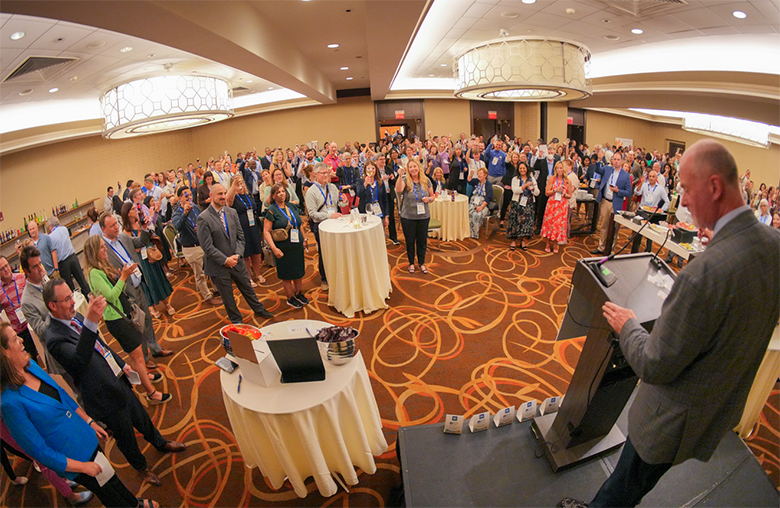
Dr. Katherine Gruenberg, associate professor of clinical pharmacy at the University of California San Francisco School of Pharmacy, sees the absence of climate content in the required curriculum as a risk to the profession. “If we are not addressing this, we are going to be behind,” she said. “Over half of medical schools are already addressing this. Students are asking for it, it’s in the lay media all the time. Nursing is advocating for it, as well. If we are the only profession that decides this isn’t important, we are going to be at a complete loss when it comes to being at the forefront of helping make decisions to address this issue.”
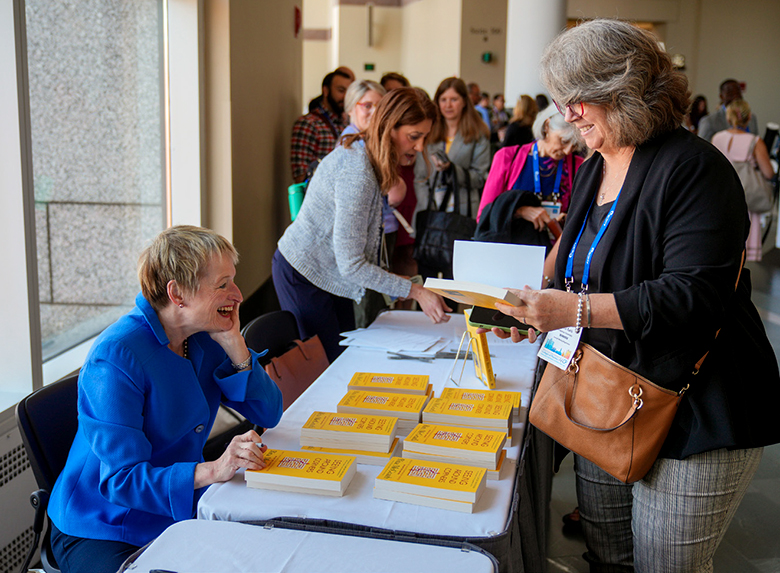
At the annual meeting, Gruenberg and Dr. Hayley Blackburn, associate professor of pharmacy practice at the University of Montana Skaggs School of Pharmacy, aimed to elevate the conversation through their session, “Time for Change: A Discussion on Climate Change Education in Pharmacy Curricula.” They shared their experiences to build momentum and compel more schools to train pharmacists to combat the climate crisis.
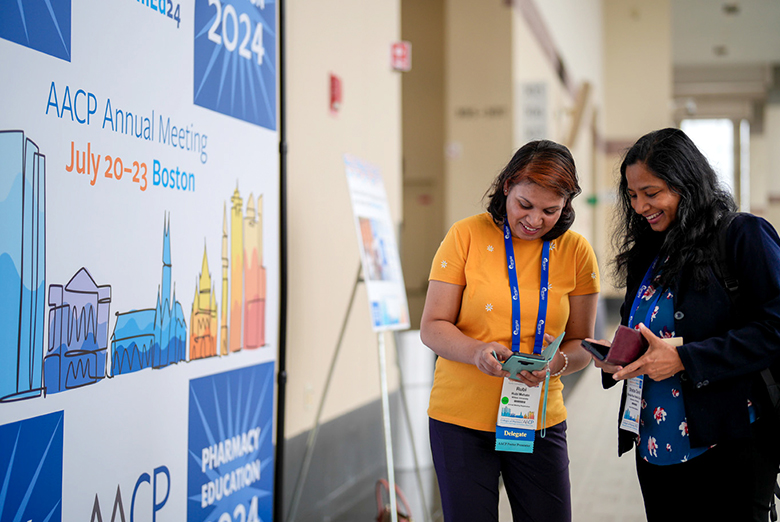
At the UCSF School of Pharmacy, faculty have woven climate content throughout their required curriculum. While learning about respiratory diseases in their first year, students find out how climate impacts air quality and how that may intensify respiratory conditions. They also learn how medications can inflame the issue further—for instance, how certain inhalers emit greenhouse gases when used. “Students see the two-way street: how climate impacts health, but also how the medications we choose (in this case, inhalers) can exacerbate the problem,” Gruenberg said.
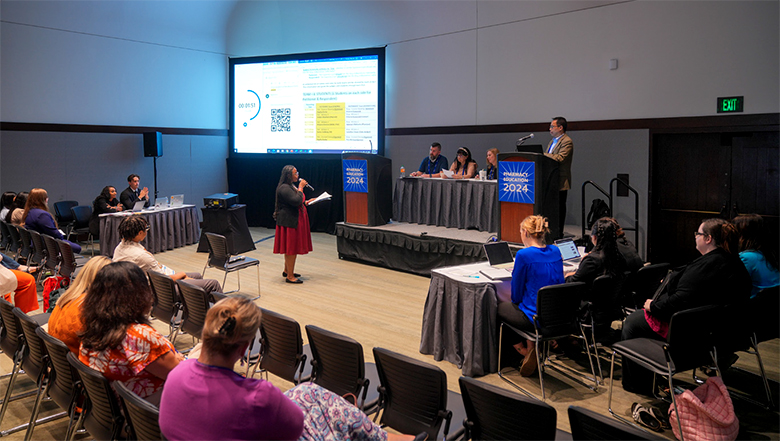
Through interactive classroom discussions, students talk about what factors they may consider or what questions they might ask patients to recommend more environmentally friendly prescriptions. Instructors hope to train students to think about environmental impacts as much as they would price or patient preference when suggesting a medication. “Our goal is that this train of thought would be included in the decision-making process,” Gruenberg said.
In their second year, UCSF pharmacy students explore how climate impacts mental health. They read scoping reviews, participate in facilitator-guided discussions and work through two patient vignettes, one global and one local case, to apply the knowledge they gained through the literature. They examine policies and alternate ways they could support patients, moving from knowledge to solution-based applications. To those who point to curricular overload or are skeptical about how relevant climate change is to the profession, Blackburn pointed out, “This is not as heavy of a lift as it may seem. We do not need to develop an entirely separate climate module or treat this as an additional, stand-alone topic in the curriculum. I would say that’s a disservice to these topics because then it’s perceived as separate from our day-to-day roles in pharmacy practice. It should be regularly integrated into our discussions of patient care and management of medications.”
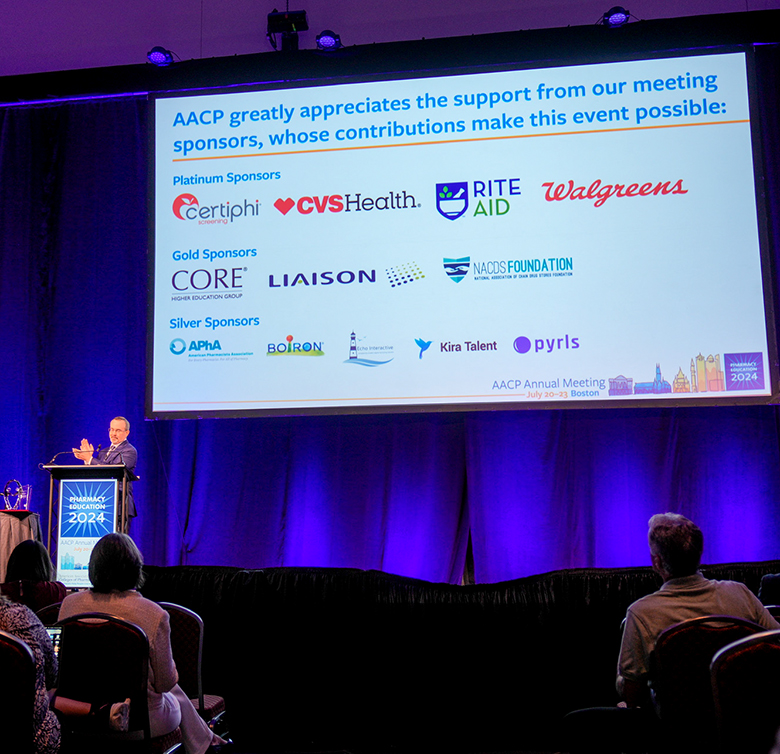
At the UM Skaggs School of Pharmacy, Blackburn started to incorporate climate content into the curriculum by broadening a fourth-year elective on global health to include planetary health, where students work with a clinic in Indonesia to address health outcomes in the community. She realized that she needed to work backward, intertwining climate content across the curriculum, so students would understand environmental determinants of health to prepare them for this global partnership.
In the fall of their third year, students attend lectures on climate and public health. They work on projects surrounding climate resilience. Students are given scenarios specific to the Missoula community, where the greatest climate challenges are extreme heat and wildfire smoke. “I give them a scenario where their group needs to come up with a way pharmacists could address this as a public health issue,” Blackburn said. “It’s a sneaky way to get students more engaged and do a really deep dive into the topic, and then have those students educate their classmates more about the issue in a local context.”

In the spring, students look at the environmental impacts of healthcare as an ethical and environmental justice issue in Blackburn’s pharmacy ethics course. “We talk about things like healthcare’s carbon footprint and pharmaceutical pollution in India as a byproduct of generic manufacturing and regulatory policies in our global supply chain, then talk about climate change as a health equity issue,” she said.
Blackburn also precepts a population health elective rotation, where her work with the local health department and a climate change nonprofit—aimed at getting pharmacists more involved in community climate resilience efforts—gives students an opportunity to do research and community outreach. “It’s so easy to give them a ton of information about the climate crisis and really leave them in a negative place. It feels so important to give them some optimism and avenues for action once you give them that information,” she noted. “So, I’ve put a lot of my energy into developing different pathways for them to get involved.”

When presented with climate lessons, students are engaged. “The reason we were able to incorporate this in our required curricula was largely due to students voicing concern about this topic and wanting to incorporate it,” said Gruenberg. Student groups on campus also try to tackle climate issues through community engagement. “When we look at the current generation of young people, we see that personal values and working to make a difference in the world are some of their most important factors in choosing a career, and climate is forefront in their minds,” Blackburn added. Integrating the subject gives schools an opportunity to present pharmacists as agents of change, attracting motivated young people who may not have previously seen the connections between pharmacy and the environment. Pharmacy must embrace this as an opportunity and a priority.
Getting Comfortable in Clinical Roles
The current landscape of pharmacy school programs for soon-to-be drug development researchers includes a vast array of offerings. There’s no requirement for the curriculum to be standardized, and according to Dr. Jonathan Watanabe, professor of clinical pharmacy and associate dean, University of California Irvine School of Pharmacy & Pharmaceutical Sciences, that’s not necessarily a bad thing. Diversity leads to drug discovery paradigms. However, he does support an emerging push for training to be more consistent. “There’s this notion that we probably need to be more systematic and more intentional about the training and instruction we deliver for the clinical research workforce, because so many more pharmacists are being pulled in that direction,” Watanabe said.

Pharmacists fresh out of pharmacy school are going straight into clinical research. Some pharmacies have become clinical trial sites. As pharmacists become more clinically focused, pharmacy schools need to make sure they are more comfortable—with clinical research, with ensuring inclusive patient populations and with being on a research team. That was one key message he emphasized in the panel presentation, “Preparing the Clinical Research and Drug Development Workforce,” moderated by Dr. Dorothy Farrell, senior director of science policy at AACP, and featuring panelists Dr. James Polli from the University of Maryland and AACP’s Miranda Steinkopf.
Watanabe has a vision that when investigators have certain clinical questions such as inquiries over medication-related outcomes, the first place they will look will be pharmacy research. Pharmacists will take the lead in generating such scholarly content and other health professionals will rely on pharmacists’ expertise. “That’s how I see it…researchers saying to themselves, ‘I’m going to turn to the pharmacy literature on this patient outcome,’ or asking, ‘Who is the clinical pharmacist who’s going to be involved in this project?’ That is really what I would like to see develop,” he said.



